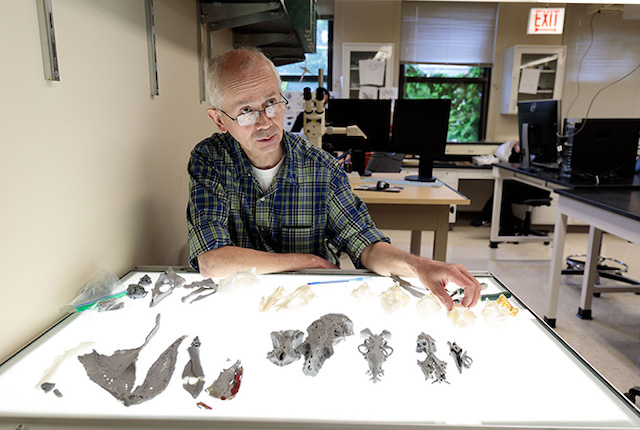The time-traveling, globe-trotting scientists of the Committee on Evolutionary Biology

The Committee on Evolutionary Biology (CEB) is a driving force behind a half century of impactful scientific inquiry at the University of Chicago. And to this day, this interdepartmental, interinstitutional graduate program remains unique.
“You would think that something this effective also would be functioning in New York or London or Paris or anywhere else they’ve got world-class universities and museums and collections and zoos and botanic gardens,” said Michael Coates, PhD, professor in the Department of Organismal Biology and Anatomy and chair of the CEB. “But it isn’t.”
What makes it so successful in Chicago and so hard to transplant? Call it what you will — the essential oil, the element that greases the skids — the sine qua non of the Committee on Evolutionary Biology over its impactful 50 years may rest in one unassuming conjunction: and.
By breaking down barriers between University departments and forging deep relationships with six world-class scientific institutions from around Chicago, the CEB creates a fertile stew of ideas and interdisciplinary research for faculty and students to feast on.
It is the South Side and the South Pacific, Hyde Park and the Himalayas.
It is 340-million-year-old Whatcheeria fossils and today’s weaver ants.
It is cutting-edge theory and world-class collections.
It is scuba diving and data crunching.
Altruism in the name of science
The committee was formed in 1968, the culmination of efforts by generations of UChicago paleontologists who had campaigned to break through barriers between academic divisions. To some degree, success came as science itself evolved, Coates said.
A precursor Committee on Paleozoology in the Physical Sciences Division was created in the 1960s to allow for the interdisciplinary study of paleobiology and evolution, but it didn’t go far enough. Biological Sciences Division faculty who had a primary interest in evolutionary biology felt disconnected from the new committee.
“It quickly became apparent that this artificial division between paleontology and neontology was not in the best interests of the field,” Coates said.

So with the Committee on Evolutionary Biology, the University created a framework for like-minded faculty to share their work and for graduate students to explore further interdisciplinary studies.
Notably, it embraced the University’s already deep ties with the Field Museum of Natural History. Since then, the CEB has developed strong partnerships with five more Chicago-area institutions: Argonne National Laboratory, Brookfield Zoo, Chicago Botanic Garden, Lincoln Park Zoo and Morton Arboretum.
“What makes it work is reciprocity and engagement,” Coates said.
I’ve never seen a program that operates with this commitment to intellectual diversity.“I’ve never seen a program that operates with this commitment to intellectual diversity,” said Susan Kidwell (William Rainey Harper Professor in the Department of Geophysical Sciences). Trevor would say, ‘But that can’t be true for birds,’ or I would say, ‘But marine systems must work differently,’ and grew from there into a really rich collaboration for us and our students.”
The pairing has produced two related studies for the Proceedings of the Royal Society B, one published in 2016 and the
